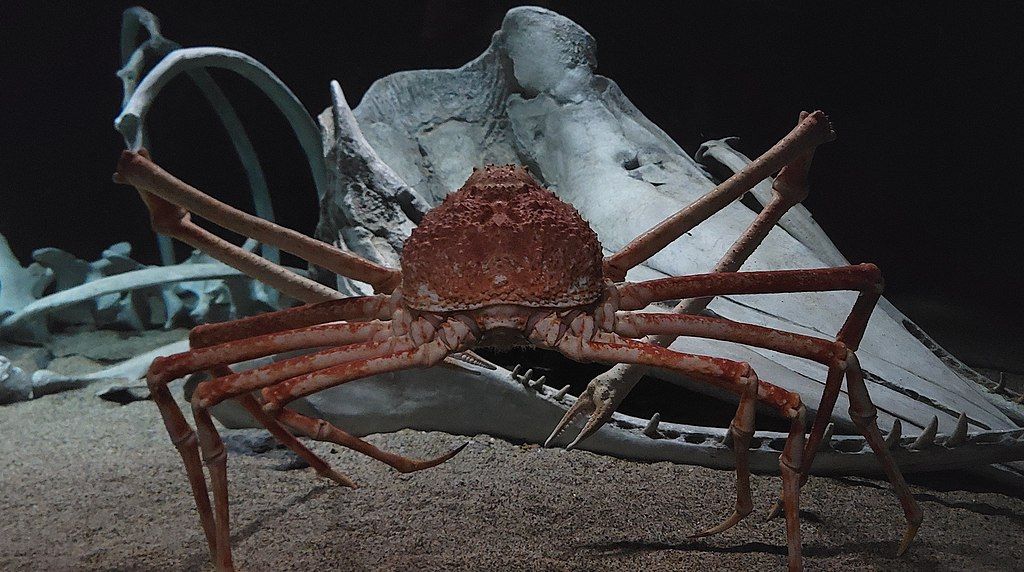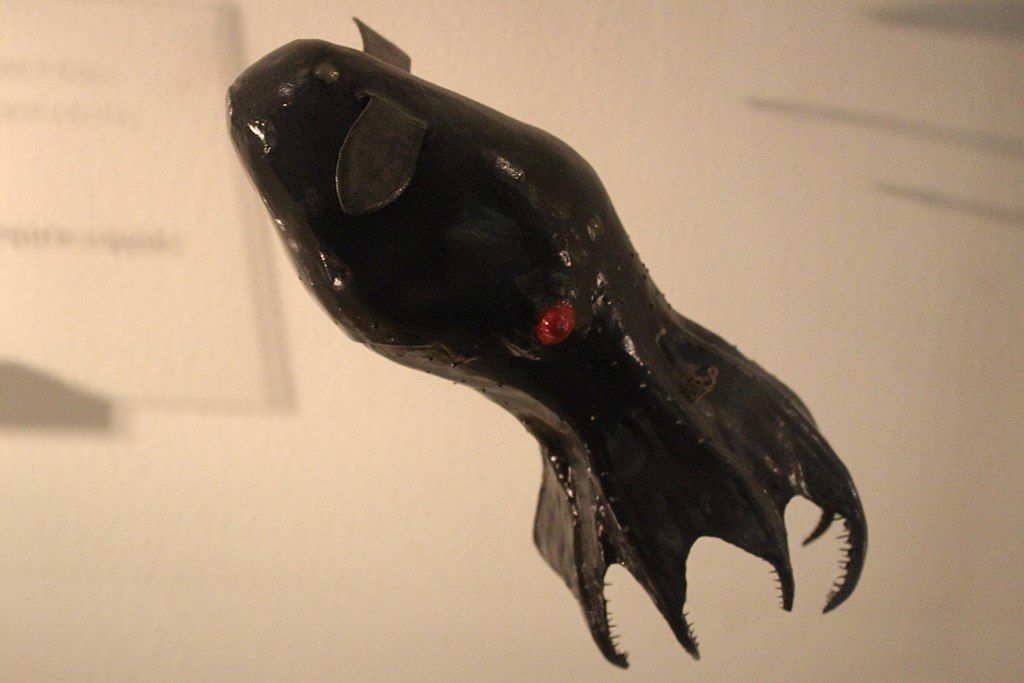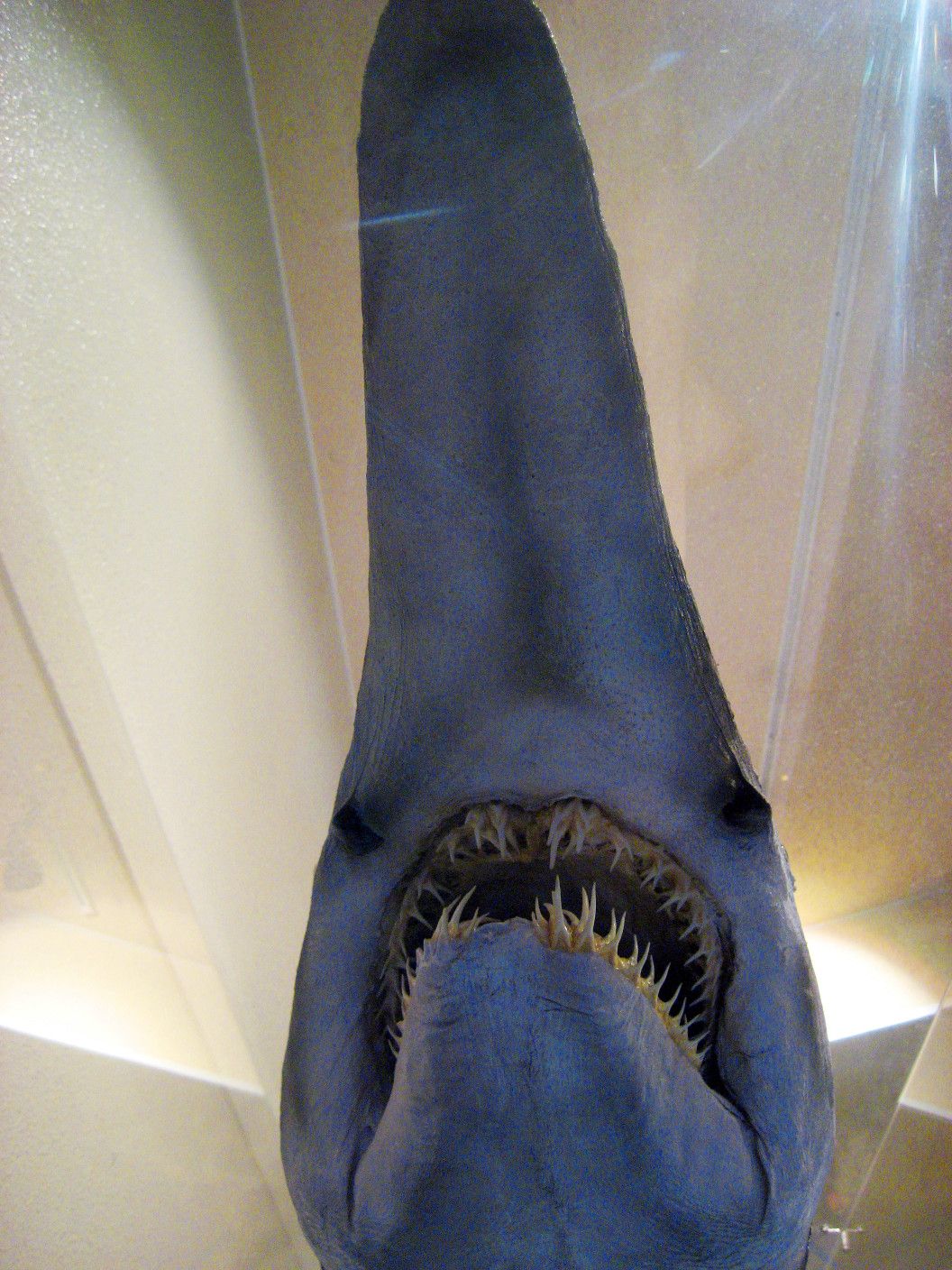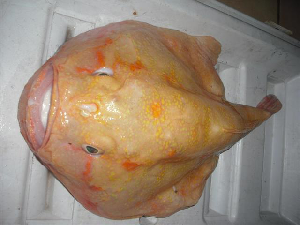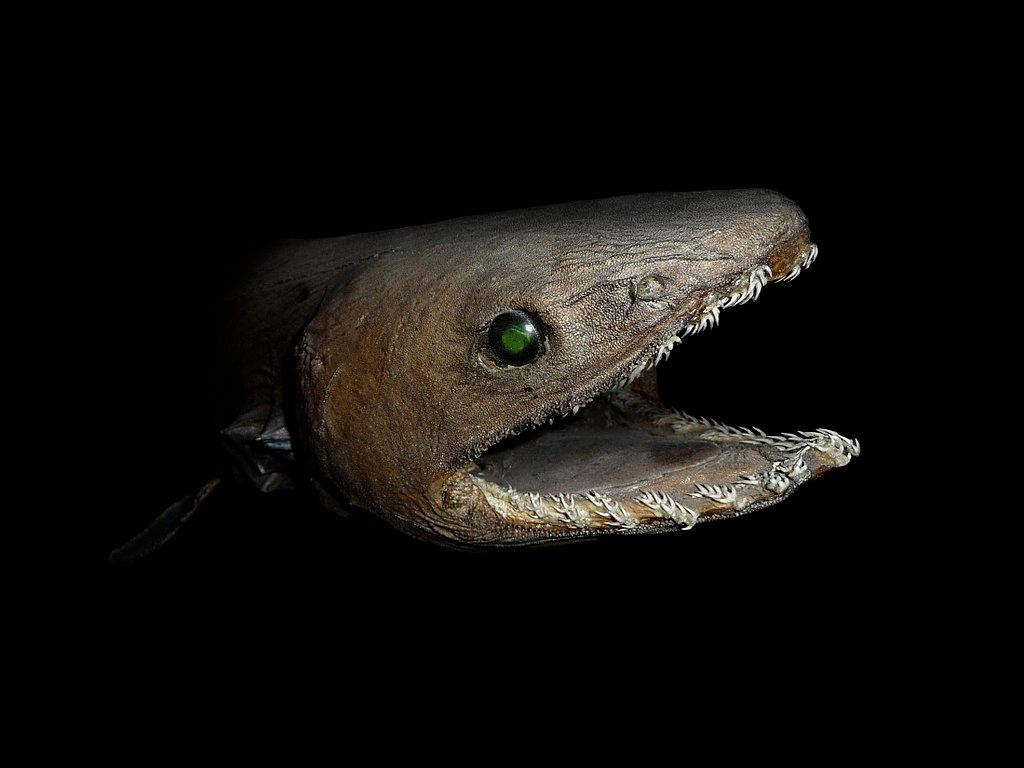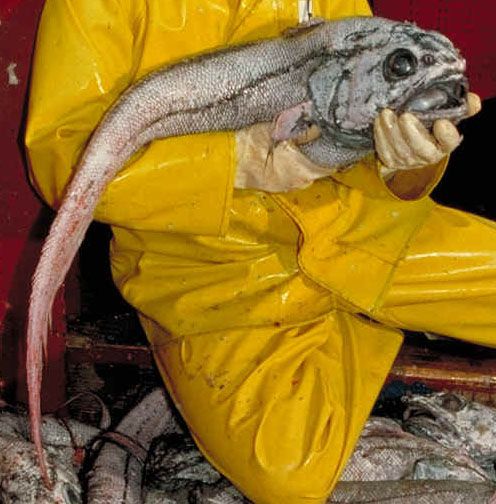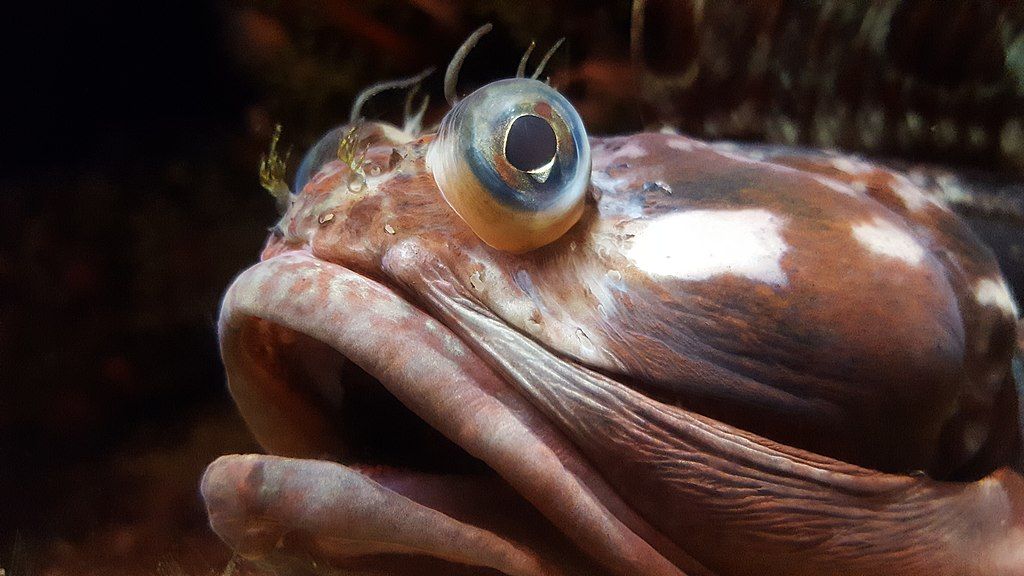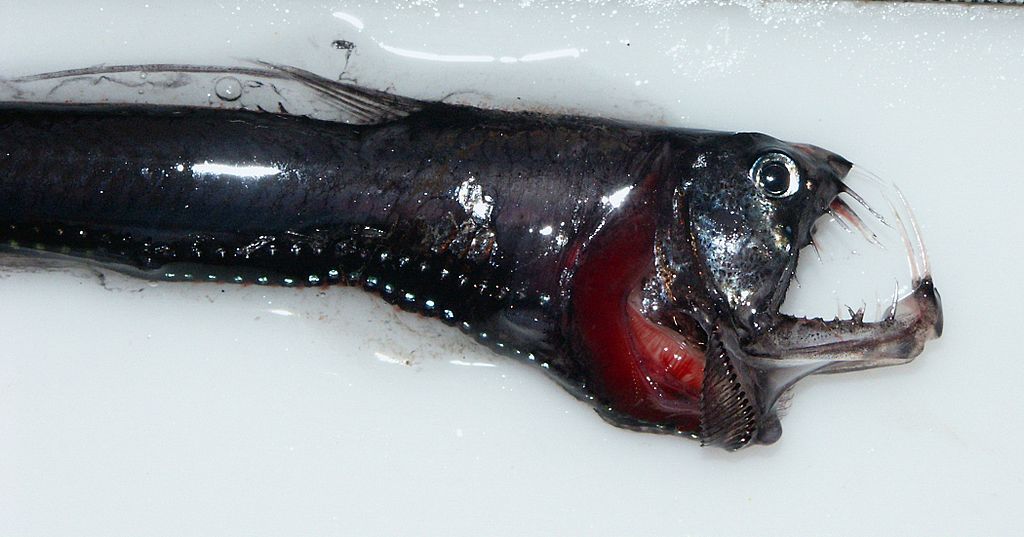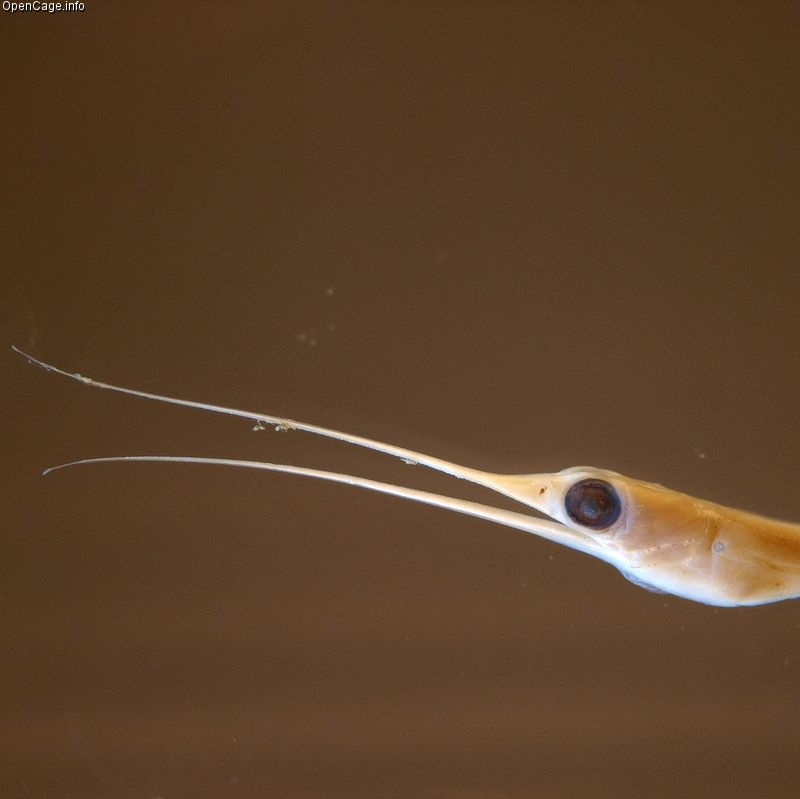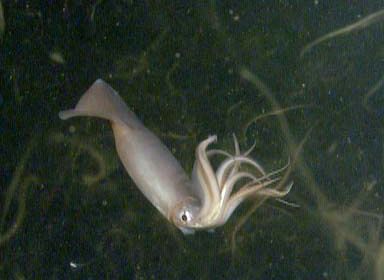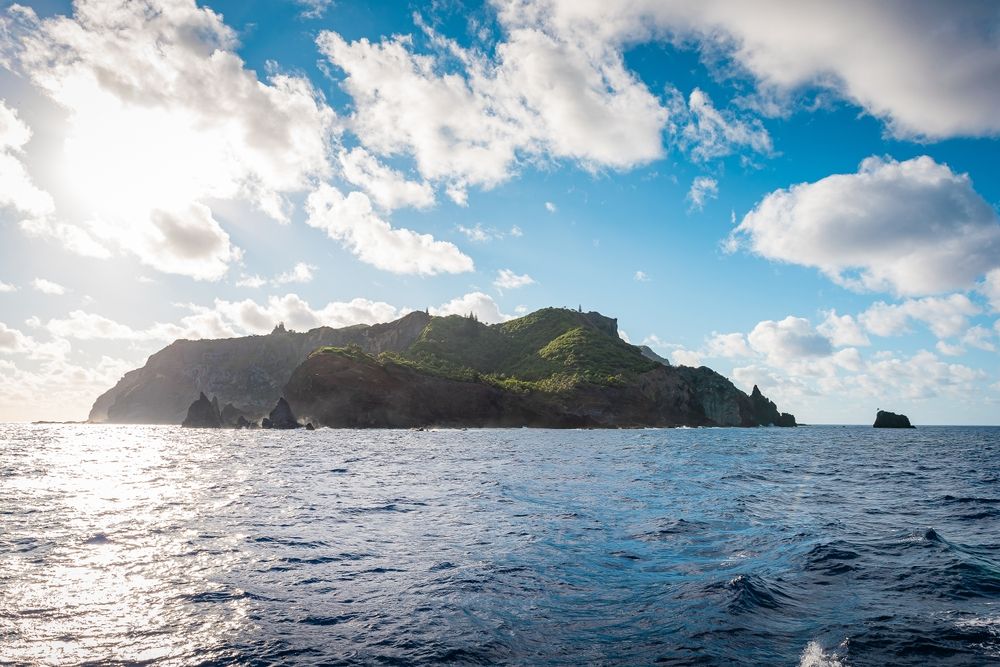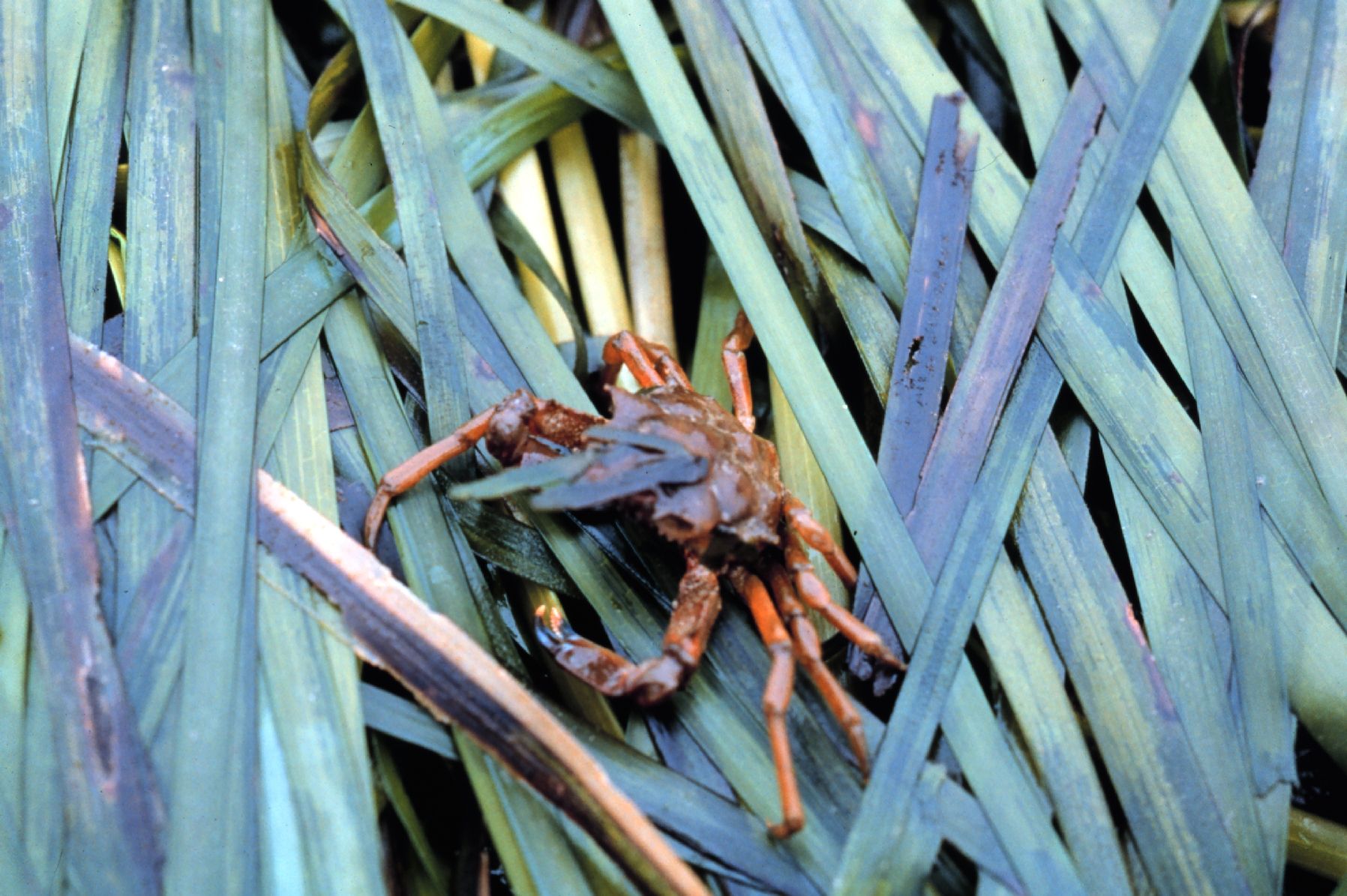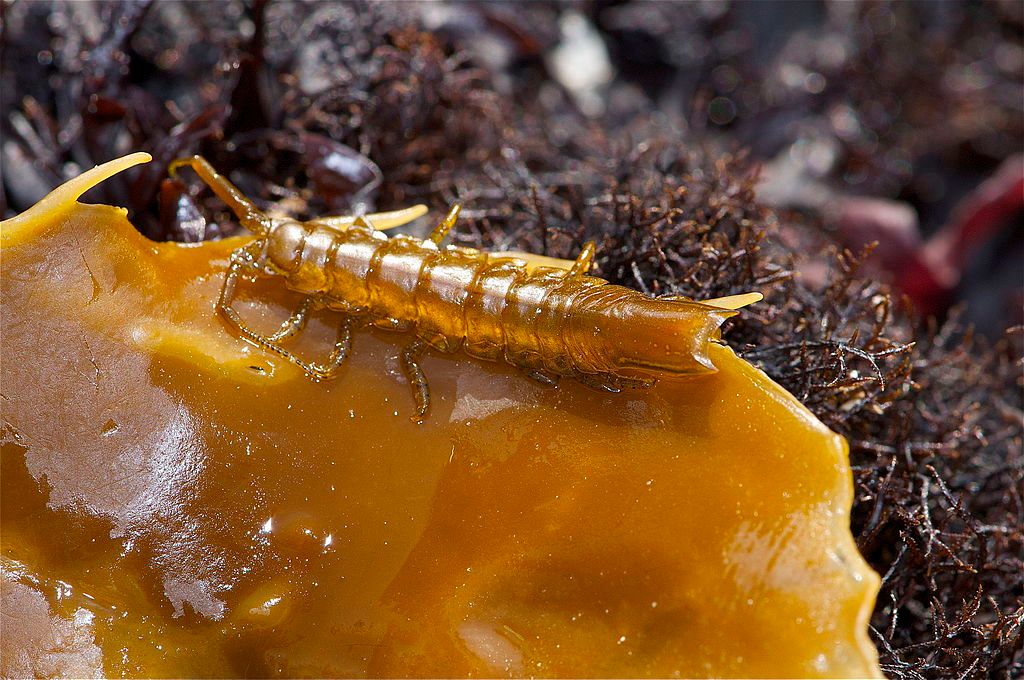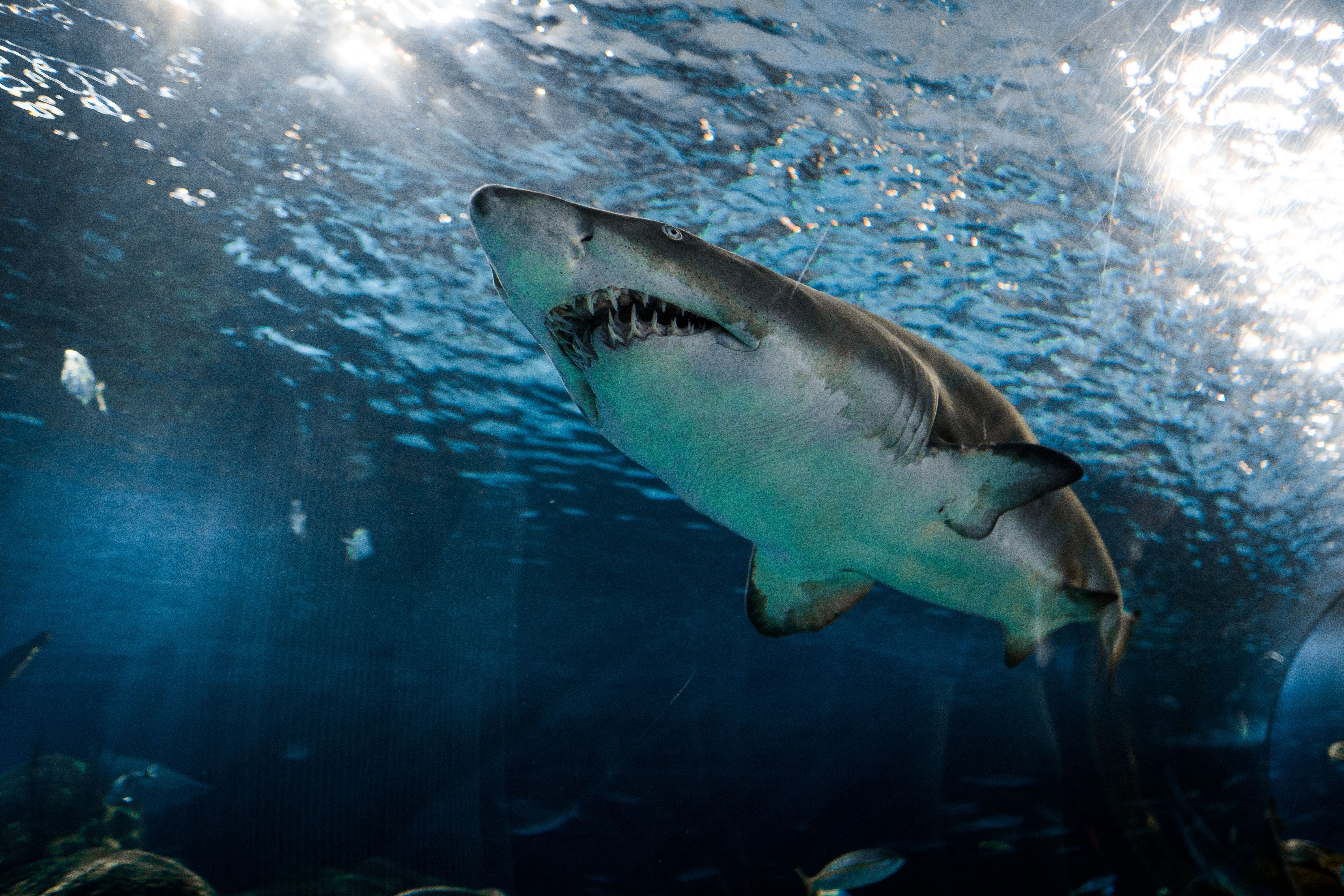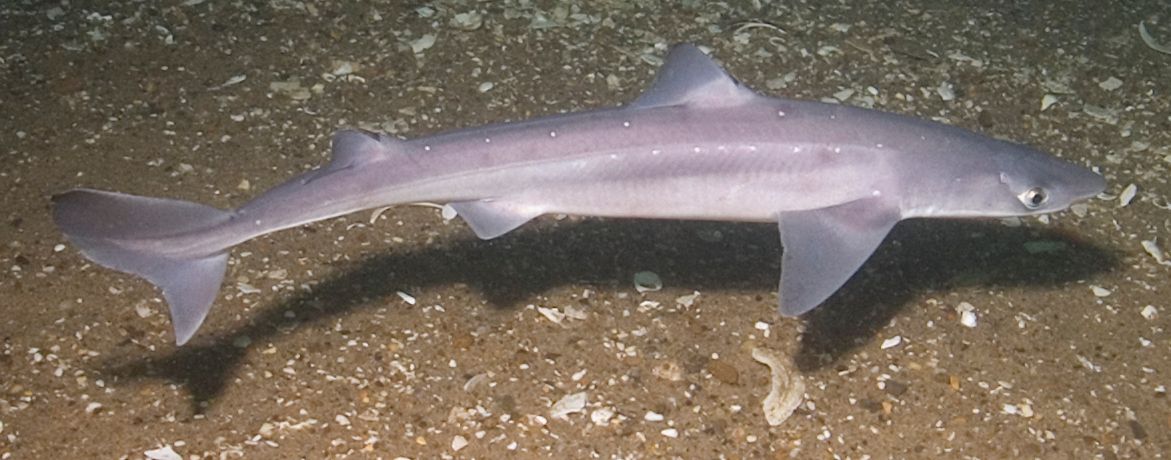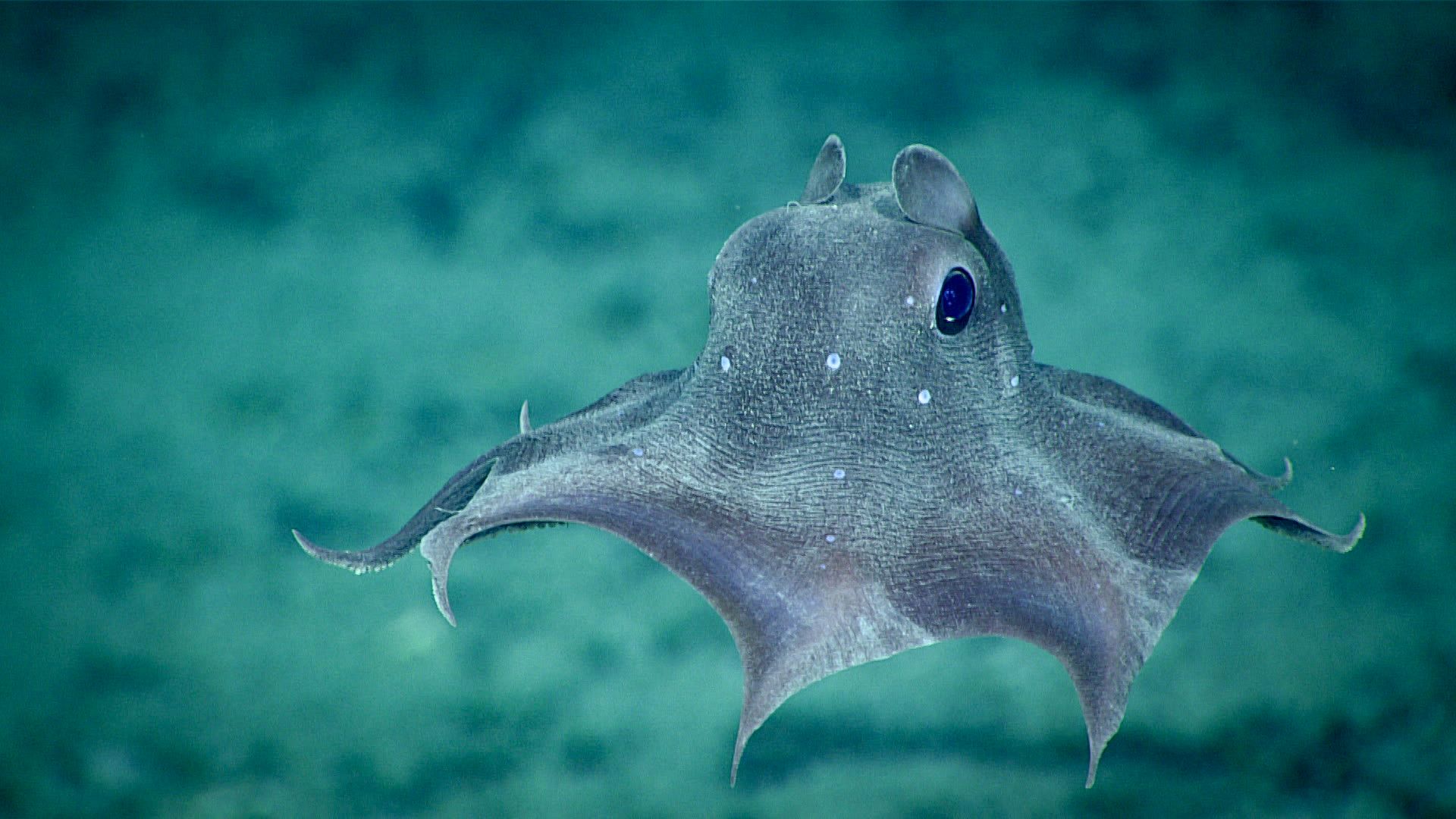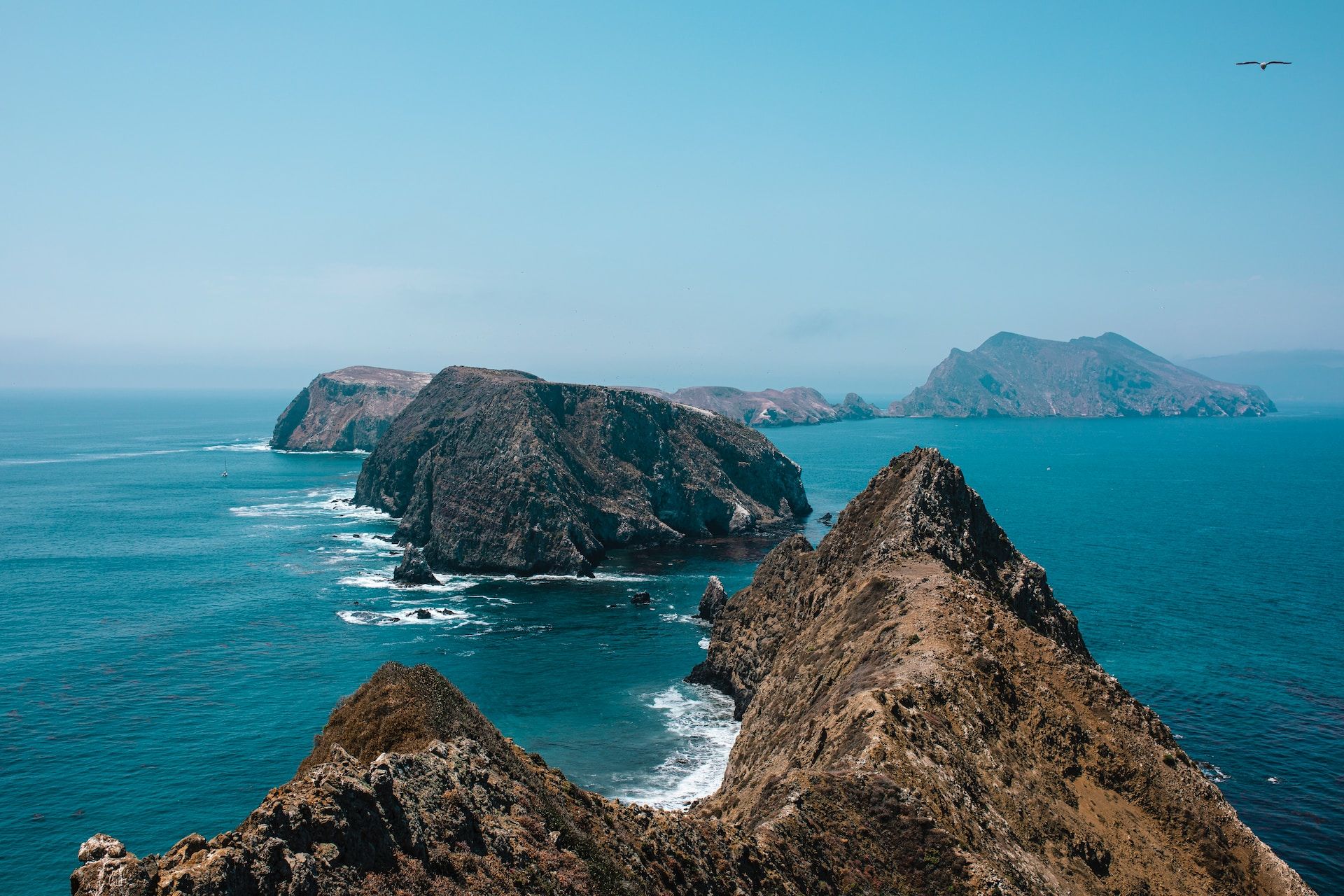Read update
- The Pacific Ocean Is Still Home To Some Of Earth's Strangest Creatures
Summary
- The Pacific Ocean holds a diverse array of strange and fascinating marine life that has adapted to survive in its dark and frigid depths.
- From giant crabs to vampire squid, Pacific waters are home to unique creatures with interesting behaviors, such as bioluminescence and long sensory legs.
- Some species, like the goblin shark, sea toad, and Pacific viperfish, are rarely seen by humans and have terrifying appearances and predatory habits.
The Pacific Ocean is still a place that occasionally baffles marine biologists when it comes to what lies beneath its surface. The Mariana Trench alone, which is the deepest place on the planet, is still being explored due to its expansive depth. With exploration comes discoveries, and usually, they're in the form of some strange creatures that we hadn't known anything about prior to a dive. Some of these are cute and unassuming, while others look like they should be starring in a horror film.
The trick to knowing why a species appears the way it does or has certain behaviors is to know about its environment. Many bottom-dwellers and deep-sea creatures must adapt to their dark, often frigid, environments in order to survive. This can mean bioluminescence, long, sensory-proficient legs, or even gargantuan teeth that eviscerate prey before they even know what hits them. A fascinating world lives just beneath this vast ocean, and while there's enough sealife for at least 20 of these articles, we're only exploring 25 of the most interesting marine life that graces these waters.
You might find that you've seen or heard about some of these creatures before and others... Well, let's just say they'll haunt your every nightmare. Each one is unique and different and offers something to the Pacific environment that we all know for being so diverse and ever-changing. Some of this sea life has forged its way throughout centuries and adapted to overcome each new change, while others have been recently discovered and are still being studied by Pacific scientists. With many islands forgotten in the Pacific, it's only weirder the deeper one goes.
UPDATE: 2023/07/17 19:31 EST BY NOAH STAATS
The Pacific Ocean Is Still Home To Some Of Earth's Strangest Creatures
This article has been refreshed with new information regarding what lives beneath the surface of the Pacific Ocean as well as photos and notes on each species. Yes, these marine creatures are sometimes at the very bottom of the sea, but who's to say they'll always stay there?
24 Japanese Spider Crab
- These giant crabs prefer the cold waters off Japan's coast and tend to savage the bottom of the sea floor for food.
If you haven't guessed by its name, this giant crab calls the cold waters off the coast of Japan it's home. They're a loner species known to hunt solo as they scavenge the bottom of the sea floor for food. They're somewhat of a gentle giant as they're not known hunters and are more likely to lose their own limbs via fishing incidents than to take the limbs off something else. They are a protected species, as their numbers have shown a significant decline in recent years.
23 Vampire Squid
- These Pacific squids are known to be predators but, overall, are harmless. They're very dark and move quickly through the water.
The Pacific is known for having some heft predators but, similar to the last gentle species; the vampire squid won't do much. Interestingly enough, contrary to what its name would imply, it's not a squid at all. This creature has its own unique identification, and again, contrary to its name, it doesn't hunt at all but rather preys on scraps in the water surrounding. Its name comes from the extension of its "cape" as well as its deep red color. It also does not have or exude ink but will expel a bioluminescent substance to confuse potential predators.
These ten cities near the Pacific Ocean are worth checking out this summer.
22 Robust Clubhook Squid
- These squids are found from California to Japan and have anywhere from 50 to 60 suckers.
This squid (which is, in fact, of the squid species) is interesting because it spans anywhere from California to Japan and can live in tropical or frigid waters. They can grow to almost seven feet in length which means they can have anywhere from 15 to 18 club hooks. Their sucker count will range anywhere from 50 to 60, making it one of the largest species of squids found in the Pacific Ocean, baring the elusive giant squid, which was first photographed in 2004.
21 Goblin Shark
- These odd-looking sharks live far below the surface (roughly 4,000 feet) and are only ever seen by divers.
This scary-looking shark lives too far below the surface for anyone other than a diver to have a run-in with it and can exceed depths of 4,000 feet. The only time they'll ever venture near the ocean's surface is to feed, during which they can unhinge their jaws. Interestingly enough, their intimidating teeth are a trademark feature due to the fact that they're the only shark whose teeth won't fully fit in their mouth. They tend to stay out of the way of anything other than the fish and squid they prey on, which means they're rarely able to be filmed.
20 Sea Toad
- Sea toads live roughly 8,000 feet below the water's surface and are part of the angler fish family.
That's right; you'll even find toads on the ocean floor, too! This sea toad is native to deep Pacific waters and is actually part of the angler fish family. This bottom-dweller can be found at depths of roughly 8,000 feet, and the scales you see covering it are actually spines. They grow to about a foot in length, and if you look closely enough -- just in front of their dorsal fin -- you'll find a hanging lure that lights up to become a bioluminescent trap for unexpecting fish. Its "legs" are actually fins, giving it the appearance of a strange underwater frog.
Here are ten things to do on the Pacific island of Niue.
19 Frilled Shark
- This shark has been around for centuries and is often considered to be closest to dinosaurs.
This shark has been around for quite some time and is more akin to a dinosaur than an actual shark. The frilled shark is quite the predator, streaming through the ocean in more of an eel-like fashion than what we're used to seeing with larger sharks. They can grow up to seven feet in length and prefer to lunge and swallow their food whole, despite how large it may be. Their main protein of choice is squid, but they'll eat anything substantial, even other sharks.
18 Grenadiers
- These fish are known as bottom-dwellers and are found near the Arctic.
Known as rattails (can you see why?), these bottom-dwellers are a species of fish that have adapted to dark and frigid living. They're found near the Arctic and Antarctic and are rather small, topping out at just under four inches in length. They're highly adept for deep-sea life, as they have chemoreceptors and chemosensory barbels to help them tune into potential prey and landmarks. They've been found at depths as deep as nearly 23,000 feet, making them pros at diving and pressurized living.
17 Chimera
- These fish are closely related to sharks, although aren't considered to be them.
The chimera fish is closely related to a shark but is not of the shark species. The fish has earned its name due to its unique features, making it both intimidating and intriguing to look at. There are several types of chimera, including the Callorhinchus callorynchus, which is pictured above. They live at moderately low depths, around 8,500 feet, and only grow up to roughly five feet in length. Their oddly-shaped snout is a sensory organ. However, many also have a venomous spine that sits just in front of their dorsal fin.
16 Fringehead
- These fish can only be found off the coast of California.
Now, this is one fascinating fish. Called the sarcastic fringehead, this unique species can be found off the coast of California. The behavior depicted in the photo is a display of territorialism, displayed by most males when defending their grounds. More research must be done to learn more about this intriguing fish, but their name certainly suits them -- their dominant nature is what makes them such unique species. The varying colors on their gills as well as the size of their teeth, help to decide how successful they are at scaring off other males.
This is often considered the graveyard of the Pacific Ocean.
15 Pacific Viperfish
- These fish have incredibly sharp teeth and are known to be aggressive.
If you want to talk about nightmare fish, the Pacific viperfish is a great place to start. Not only are its teeth too big for its mouth, but they also have luminescent scales that will light up, assumedly to signal to other species in the area that they're around. This may also help to attack smaller fish and crustaceans, but that has not yet been confirmed. Not too much is known about these odd deep-sea creatures other than the fact that they're eating machines and will automatically try to swallow anything, regardless of its size.
14 Slender Snipe Eel
- These eels have a dragon-like appearance and prey mainly on crustaceans.
Although this looks like some kind of dragon, it's actually of the eel species. The slender snipe eel has a mouth that's very beak-like in structure, making it somewhat monstrous-looking, but serves a practical purpose. Since they prey mostly on crustaceans, a hard beak is needed to crack the shells of crabs, lobsters, etc. They don't weigh very much, and not much else is known about them, considering the only specimens most scientists have, have been found from the stomach contents of other fish.
13 Humboldt Squid
- These squids are more aggressive towards humans (divers) and have razor-sharp claws.
When it comes to predators to watch out for, the Humboldt squid holds a high reputation in the Pacific. While they're not intentionally aggressive toward humans, there have been reported attacks from researchers and divers. These scary-looking squids are known for their flashing colors as well as their razor-sharp claws, leading up to a beak-like mouth opening. Most Humboldts reach a size of four feet in length and can weigh in at over 100 pounds. Their numbers are actually increasing as a result of their rapid reproduction rate.
12 Giant Squid
- The giant squid can grow as large as 43 feet and is often found miles below the water's surface.
The giant squid is different from its cousin, the colossal squid, and is considered to be so massive due to deep-sea gigantism. It can grow up to 43 feet, which makes it one of the largest species of animal on earth, and while documented sightings are rare, there have been plenty of eyewitness accounts to back this up. What scientist do know is that these squids will use two main tentacles to grab their prey, reel it in, shred it with their "teeth," and pull it toward their beak-like mouth.
11 Graceful Kelp Crab
- These crabs are small and harmless, often finding themselves in kelp groves throughout the Pacific Ocean.
Hey, we never said that Pacific sea life couldn't be cute, too! This tiny little graceful kelp crab is harmless (as you can tell) and can be found among kelp groves. Its scientific name is Pugettia gracilis, and doesn't vary much from any other species of crab other than its chosen environment. It can also be found on rocky shores in tidal zones amidst kelp debris. More often than not, these tiny crabs will be found in protected underwater environments where they're free from predators and not likely to be seen easily.
10 Kelp Isopod
- These resemble bugs found on land and are often found on rocky shores or mussel beds.
This little guy is known as a kelp isopod, and it's very similar to a bug that you'd find on land. It has an appearance that's almost like a potato bug (or roly-poly to some people) but thrives in an environment where the kelp is plentiful. It can also be found in tide pools on rocky shores and in mussel beds but will likely remain hidden if it can. These tiny bug-like creatures eat algae and can be found anywhere from the coast of California all the way to Siberia. While their coloring varies, they're all the same species and are an important part of the Pacific ecosystem.
9 Japanese Skeleton Shrimp
- These skeleton-like creatures are a species of shrimp mainly found off the coast of Japan.
These strange skeleton-like structures are actually a species of shrimp. The Japanese skeleton shrimp is an omnivore and can grow up to two inches in length. They'd be challenging to spot, especially due to their changing color, which varies from red to green or blue depending on where they are in the water. At one point, they were native only to the waters of Japan but have since migrated. They call man-made structures in the water and floating objects their home, which makes them fairly adaptable creatures.
These are ten beautiful Japanese islands everyone needs to visit.
8 The Great White
- Great whites are apex predators, meaning they aren't actively hunted or eaten by other sea creatures.
Many people know about these apex predators, and the old saying, "It's more afraid of you than you are of it," simply doesn't apply here. Great whites are eating machines and have rows of teeth that are designed to lock onto prey and tear until the animal is nearly lifeless and immobile. They can grow up to 13 feet in length and are quick swimmers, and have a bite force of roughly 4,000 pounds. These are the monsters of the deep in the Pacific and can be merciless and worthy of respect.
7 Spiny Dogfish
- These are a species of shark, even though they're far smaller.
Surprisingly, the spiny dogfish is a species of shark despite its small size. The species of dogfish native to Pacific waters is often referred to as the Pacific spiny dogfish and varies slightly from its cousin species. The danger with this shark lies in its spine rather than its bite, which can be used as a defense mechanism to encourage predators to loosen their bite when attacking. Additionally, they can secrete venom from these spines, making them multifunctional and highly effective.
6 The Dumbo Octopus
- These become fairly large, with elephant-like "ears" and features.
This adorable little guy was recently captured on film by a group of scientists who also reveled in its cuteness. While it looks like an extra from Finding Nemo, it's actually called the Dumbo octopus. This is obviously a baby of the larger, more well-known species, of which you can clearly see why the species earned its name. With a large, blob-like body, elongated "ears," and flexible tentacles, this octopus looks like an underwater elephant. It lives in deep waters at a depth of roughly 23,000 feet, making it the deepest-diving of any octopus species.
5 Giant Amoeba
- The deep waters of the Mariana Trench host these creatures, often found 6+ miles underneath the water.
In 2011, it was discovered that a species of giant amoeba inhabited the deep waters of the Mariana Trench. Also known as xenophyophores, these single-celled organisms are the largest ever recorded, measuring roughly four inches in length. While they're referred to as amoebas, they're actually more akin to a sponge but are living animals. They were found nearly 6.6 miles under the surface which is also the lowest depth any xenophyophores have ever been discovered... We can't imagine what else scientists will find down there!


